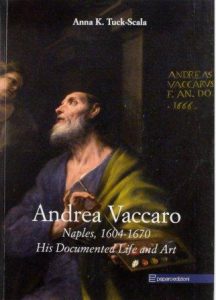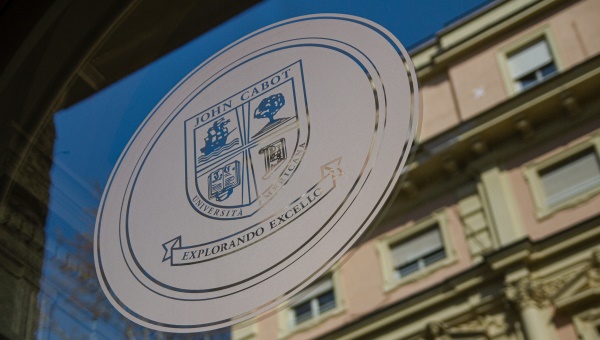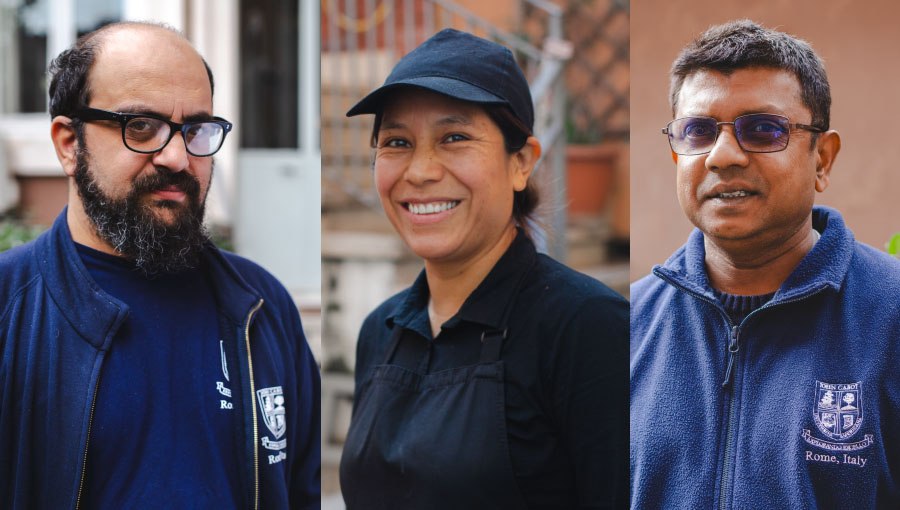Professor Tuck-Scala Publishes Groundbreaking Book on Vaccaro
JCU art history professor Anna Tuck-Scala recently published Andrea Vaccaro (Naples, 1604-1670): His Documented Life and Art, Naples, Paparo Edizioni. The product of many years of archival research, the book establishes Prof. Tuck-Scala as one of the top scholars in her field. The publisher describes the book as “the first scholarly monograph on one of the most important 17th century painters of southern Italy,” providing “a solid and fundamental starting point for future studies on the painter.” Professor Tuck-Scala, who has been teaching at JCU since 2008, describes the book as “the fruit of many years of field and archival research, detective work, persistence, and luck!”
What first brought you to Italy and your interest in 17th century Naples?
When I was an undergraduate at Cornell and still undecided about my major in the humanities, I visited Italy and then decided to study abroad in Rome for a semester. I fell in love with the city, the monuments, and the history. I also was very curious about Naples, the closest city to where my husband is from. The study abroad experience really changed my life: when I went back to Cornell I knew I would pursue art history and spend more time in Naples and Rome, so I chose to focus on Baroque art.
How did you become interested in Andrea Vaccaro?
My work on Vaccaro began with my Ph.D. dissertation. I had considered working on Caravaggio (the subject of my M.A. thesis), but it was difficult to find a way to say something new. I became interested in Vaccaro when I saw the high quality of his paintings, such as the “Lamentation” in the Correale Museum in Sorrento where I live. I thought it was strange that Vaccaro has often been considered a second rank painter by modern scholars, despite the fact that he was the leading artist in Naples around 1660 and sold many paintings, many of which were exported to Spain. Then after I finished my Ph.D., I just continued working on Vaccaro, meticulously analyzing all of his paintings, checking documents myself, and putting them all together for the first time. In this way, I was able to demonstrate that Vaccaro truly was a great artist in his time and I’ve also made a lasting contribution to Naples, the city I have learned to appreciate over many years.
Can you give an example of the detective work and persistence that led you to make new discoveries?
I took the time to actually look firsthand at every painting and document that’s in the book, not just to quote and rely on what others have said. I discovered new documents that other local scholars had searched for unsuccessfully: for example, I spent large amounts of time in bank and church archives and found records of payments for Vaccaro’s paintings, which allowed me to date previously undated work, and biographical documents, which provide detailed information, for example, about his marriage and his family. The language of these documents is very particular and challenging: I had to try to decipher 17th century Neapolitan used by notaries!
An example of your good fortune?
After four years in press, the book was about to be published, but I felt a nagging regret that a fundamental piece of Vaccaro’s story was missing: one of his most important paintings, which he painted for the Corporation of Painters after the completion of his tenure as first superior, had never been published in color and no one seemed to know where it was located after the major earthquake in Naples in the early 1980s. Then out of the blue, I received a tip from a friend of a friend who mentioned in passing that he may have spotted the painting in a private institution in Naples. So I rushed over there to check it out, and was profoundly moved when I saw it: I felt as if the artist had rewarded me for all my hard work and perseverance!
How did you feel when the book was published?
Exhausted, after so many years of research and such a long gestation period, but extremely gratified because I think I made a solid contribution to establishing Vaccaro’s historical role as a protagonist of the artistic culture of Naples. I’m happy that I published a useful book of permanent value. And since there is very little on this period and Naples in English, many university libraries in the U.S. are interested in acquiring the book for their collections.
How would you describe your teaching philosophy?
I take the same approach to teaching as I do to research: I tell students to be informed about what scholars say and have said, but I encourage them to go and actually see for themselves and not to take anything for granted. This is quite different from what students have been doing with digital reality; they have the advantage of having so much information and imagery easily available for them to consult, copy and use. However, it’s important to develop skills to think and look critically and not rely so heavily on secondary sources. For me, what’s so significant about teaching baroque art at John Cabot and doing research in Italy is that we have the precious opportunity to go to the source, to see the works in context. Students tell me that after learning about art on-site, they are happy to discover that they are able to take their relatives and friends around to see monuments and explain their significance to them. Years from now, maybe students won’t remember my lectures or reading assignments, but they will remember vividly that original painting or statue that opened their eyes and inspired them.
What kind of advice would you give to students coming to study in Rome?
Teaching university students is exciting because they are at a time in their lives when they will be making choices that will probably affect their whole lives. My advice to students is to prove George Bernard Shaw wrong when he said that youth is wasted on the young: take advantage of every minute that they are here, to follow what interests them, to go to exhibits, concerts, to try to see as much as possible. They should broaden their horizons and deepen their knowledge, by experiencing Italian art, culture, and food firsthand.
And to students in general?
I sincerely believe that it’s important for students to follow what they want to do and not just think of what will make money, even though this may be a challenge because of the economic crisis. But I’m idealistic and I think that if you do what you love to do, chances are better that you can become good at it and reach a level of mastery, and life helps you along by opening doors: it seems to have worked for me with this book!
Any advice for young scholars?
Do your best, do not become discouraged if you are rejected for an application or a grant; just keep trying because there are so many options available. As a professor of mine used to tell me, the people who get ahead and realize the goals they set for themselves are the ones who persist.
Professor Tuck-Scala has also published on Caravaggio’s Neapolitan paintings, Andrea Vaccaro’s paintings in Spain, and a literary guidebook to Sorrento, the town where she resides. She teaches the popular onsite course Baroque Rome and its Monuments every semester and last year a new course, Selected Topics in Baroque Art: Painting in Naples. She is always happy to talk to students in and out of the classroom about art, archival research, and her passion for exploring the cities of Rome and Naples.
Learn more about studying art history at John Cabot University in Rome!






